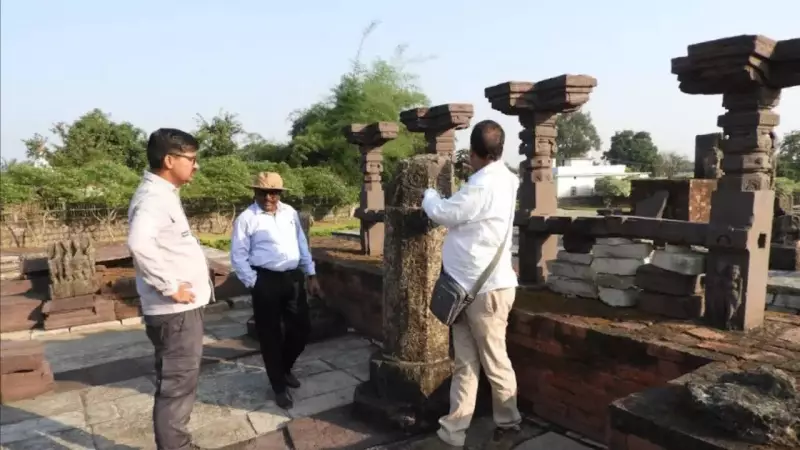
A significant joint inspection of the ancient heritage sites in Sirpur was conducted on November 8, marking a pivotal moment in the township's journey towards sustainable development and its proposed nomination for the UNESCO World Heritage List.
A New Vision for Sirpur's Heritage
The exercise, led by officials from the Sirpur Special Area Development Authority (SADA) and the Archaeological Survey of India (ASI), aimed to reassess conservation strategies, upgrade tourist amenities, and bolster Sirpur's case for international recognition. A key decision involved reorganizing the 34 heritage sites into four distinct thematic clusters. This strategic move is designed to streamline management and significantly improve accessibility for visitors from India and abroad.
Prominent sites set for enhancement include the Tivar Dev Monastery, Anand Prabhu Monastery, Laxman Temple, Ancient Marketplace, Raj Mahal, and Baleswar Temple, as highlighted by SADA CEO and divisional forest officer, Dhammshil Ganveer. Each cluster will be equipped with international-standard facilities such as rest shelters, drinking water, informative signage, well-maintained pathways, and clean sanitation facilities.
Boosting Infrastructure and Inclusivity
The inspection team, which included M. Kalimuthu, Superintending Archaeologist of ASI Raipur Circle, and Rahul Tiwari from the ASI, thoroughly evaluated the conservation needs and tourism potential of every monument. Their goal is to create world-class infrastructure while meticulously safeguarding Sirpur's rich historical and cultural legacy.
In a major push for visitor convenience, the ASI is actively linking lesser-known monuments to main access roads. New plans also unveiled the introduction of connecting pathways and battery-operated vehicles. This initiative not only promotes eco-friendly transport but also aims to generate local employment opportunities.
Highlighting a commitment to inclusivity, the ASI has introduced facilities for differently-abled visitors. These include tactile and Braille signages and sign-language interpretation videos. Furthermore, tourists can now enjoy augmented and virtual reality-based immersive experiences, bringing the ancient history of Sirpur to life.
Cultural Revival and Long-Term Sustainability
To ensure year-round engagement, the South Central Cultural Zone (SCCZ) plans to organize quarterly national cultural fairs, crafts exhibitions, and art events at Sirpur. There are also concerted efforts to scale up the popular Sirpur Festival into a major regional cultural extravaganza.
"Our goal is to balance heritage preservation with inclusive tourism and community development. By integrating technology, sustainability, and local participation, Sirpur is moving closer to global recognition," stated Dhammshil Ganveer, CEO of SADA Sirpur.
All development initiatives will actively involve local stakeholders through guide certification programs, skill development workshops, and tourism-linked livelihood opportunities. This community-centric approach is crucial for the project's long-term sustainability. Additionally, future archaeological surveys and excavations in potential mound areas are planned, pending due permissions, which promise to enrich Sirpur's already vast archaeological record.
This collaborative effort between SADA Sirpur and ASI Raipur Circle represents a decisive leap forward in transforming Sirpur into a premier heritage tourism destination, strengthening its UNESCO candidacy and promising lasting socio-economic benefits for the region.





